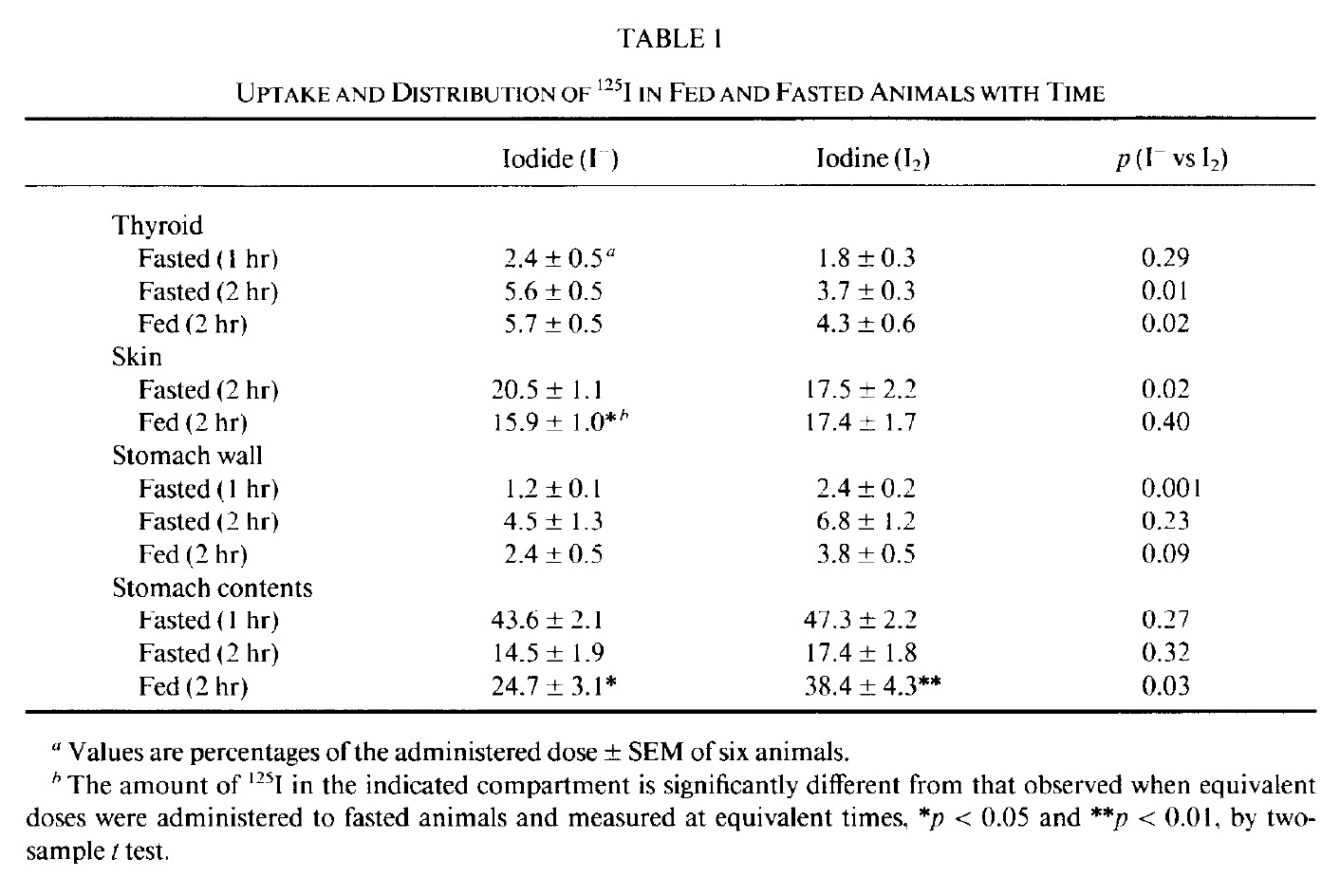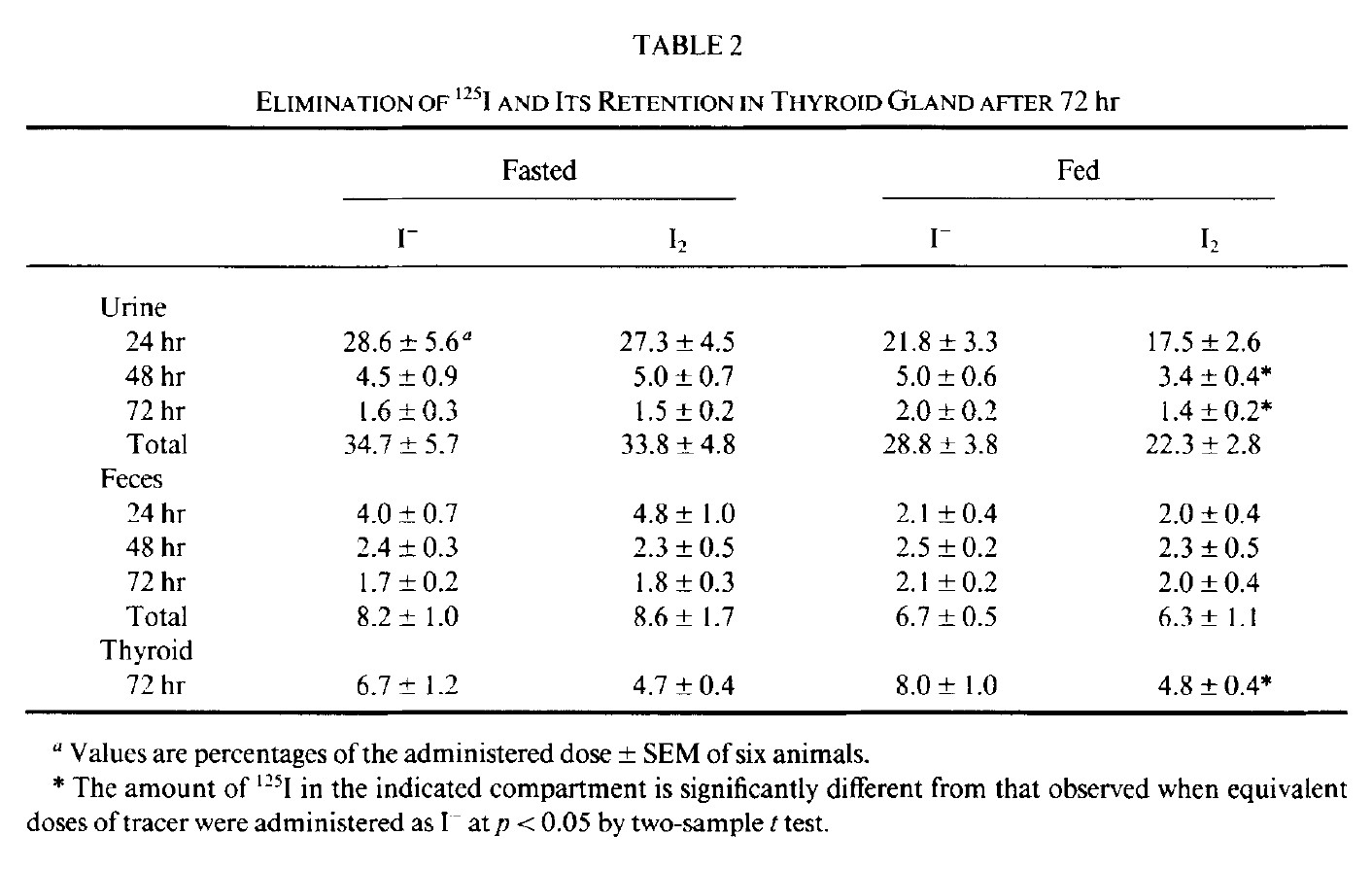Differences in the Distribution of Iodine and Iodide
-
Differences in the distribution of iodine and iodide in the Sprague-Dawley rat
"At 2 hr, substantially higher concentrations of radioactivity [125I throughout the experiment] are retained in the stomach wall and contents of fed animals administered I2 compared to I-. This suggests that I2 reacted with the components of the diet present such that it retarded I absorption. It is notable that uptake of I2 into the thyroid was affected to a greater degree than peripheral distribution as measured in the skin."

"Total urinary and fecal levels of radioactivity over the entire 72-hr period were basically equivalent indicating that overall absorption was similar in both I- and I2-treated animals. However, the retention of I in the thyroid was greater at 72 hr in both fed and fasted animals treated with I- compared to I2. This further supports the notion that a significant fraction of radioactivity in the blood of animals administered I2 is present in a form other than I- for an extended period."

"By-products are formed in the gastrointestinal tract after chlorine is administered orally (Mink et al., 1983). Many of the by-products result from the chlorination of endogenous compounds such as amino acids (Pereira et al., 1973) peptides (Ayotte and Gray, 1985) proteins (Scully and Bempong, 1983), lipids (Ghanbari et al., 1982) and purine and pyrimidine bases (Hoyano et al.. 1973). Although less reactive than chlorine, iodine is probably still capable of reacting with some of these same compounds in the gastrointestinal tract to form a variety of iodinated compounds. Iodine is known to react with histidine, tyrosyl, and sulthydryl moieties. Harrington et al. (1985) have documented that chlorine dioxide activates I- in the diet to a species (presumably I2) that is capable of iodinating organic material in the gastrointestinal tract."
"Based on results in this paper, we propose that distributional differences between I2 and I- are the result of reactions of I2 with endogenous organic chemicals in the gastrointestinal tract. These reactions would be expected to render I2 less available for uptake into the thyroid, which actively transports I-, in an energy-requiring process, from the blood into the thyroid gland (Ingbar, 1985). Further work is necessary to isolate and identify iodinated by-products produced in the gastrointestinal tract and to determine whether they present an unacceptable risk to humans consuming iodinated drinking water."